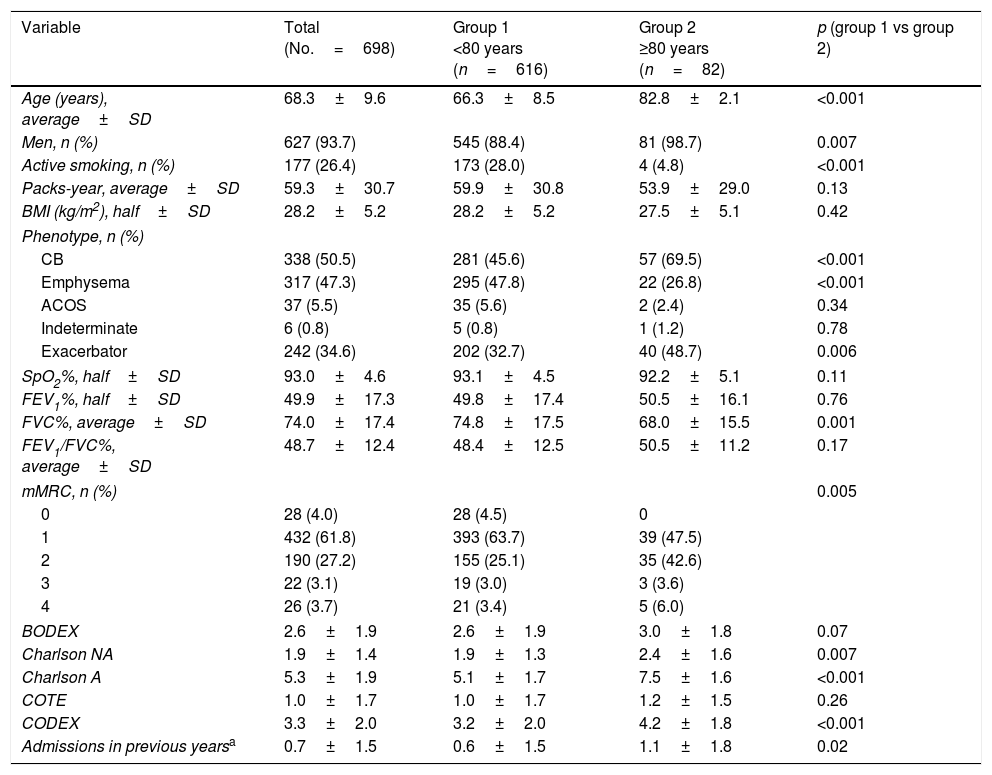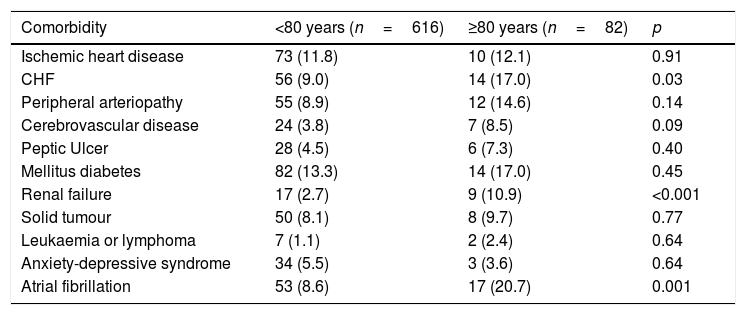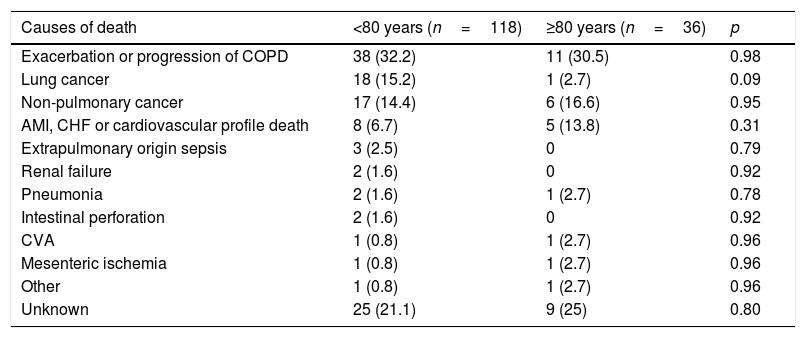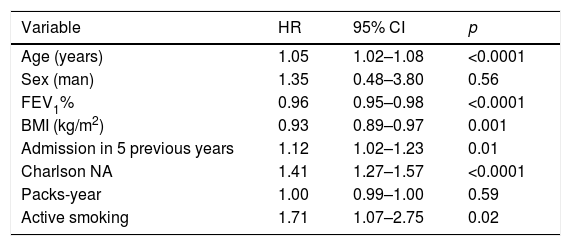Most studies on chronic obstructive pulmonary disease (COPD) exclude octogenarian patients. Therefore, the disease is not well characterized in this age group. The objective of this study is to analyze the clinical characteristics of octogenarian patients with COPD and the usefulness of the prognostic indexes used most frequently in this age group.
Patients and methodRetrospective study of consecutive patients seen at a clinic between 2009 and 2017. The following variables were analyzed: lung function parameters, distribution of clinical phenotypes, income history, mortality, comorbidities and usefulness of the Charlson, BODEX, COTE and CODEX indexes to predict mortality.
ResultsThe sample comprised 698 patients, 82 aged (11.7%)≥80 years old. Mean follow-up time was 47.9±21.8 months. In octogenarian patients, the severity of the COPD, assessed by means of the FEV1% or BODEX index, was similar to that of younger patients, but dyspnea was worse in the elderly group. In these patients, the chronic bronchitis and frequent exacerbator phenotypes were the most frequent, whilst the emphysema phenotype was the least common. Octogenarians had a greater prevalence of cardiovascular comorbidities and renal diseases. Moreover, hospital admissions were more frequent and mortality was higher in these elderly patients. Most prognostic indexes were useful in predicting mortality in elderly patients. CODEX was the most useful index to predict mortality, both in octogenarian and younger patients.
ConclusionOctogenarian patients with COPD have differential characteristics which could imply the need for different therapeutic approaches. Prognostic indexes are useful for predicting mortality in this population.
La mayoría de los estudios sobre enfermedad pulmonar obstructiva crónica (EPOC) excluyen a pacientes octogenarios, por lo que la enfermedad no está bien caracterizada en esta franja etaria. El objetivo de este trabajo es estudiar las características clínicas de los pacientes octogenarios con EPOC y la utilidad de los índices pronósticos más empleados en la enfermedad en esta edad.
Pacientes y métodoEstudio retrospectivo de pacientes consecutivos atendidos en una consulta entre 2009 y 2017. Se estudiaron parámetros de función pulmonar, distribución de fenotipos clínicos, historial de ingresos, mortalidad, comorbilidades y la utilidad de los índices de Charlson, BODEX, COTE y CODEX para predecir mortalidad.
ResultadosLa muestra constó de 698 sujetos, 82 (11,7%)≥80 años. El seguimiento medio fue de 47,9±21,8 meses. En los pacientes octogenarios la gravedad de la EPOC medida por el FEV1% o por el índice BODEX fue similar a la de sujetos más jóvenes, pero la disnea fue mayor. En estos pacientes fue más frecuente el fenotipo bronquitis crónica y el exacerbador frecuente, y menos prevalente el enfisema. Los octogenarios tenían más prevalencia de comorbilidad cardiovascular y de insuficiencia renal. Los ingresos hospitalarios y la mortalidad fueron mayores en los octogenarios. La mayoría de los índices pronósticos tuvieron utilidad para predecir mortalidad en los pacientes ancianos, y en ambos grupos etarios el índice CODEX fue el mejor a este respecto.
ConclusiónLos pacientes octogenarios con EPOC tienen unas características diferenciales que podrían implicar un abordaje terapéutico diferente. Los índices pronósticos son útiles para predecir mortalidad en esta población.
Artículo
Comprando el artículo el PDF del mismo podrá ser descargado
Precio 19,34 €
Comprar ahora












